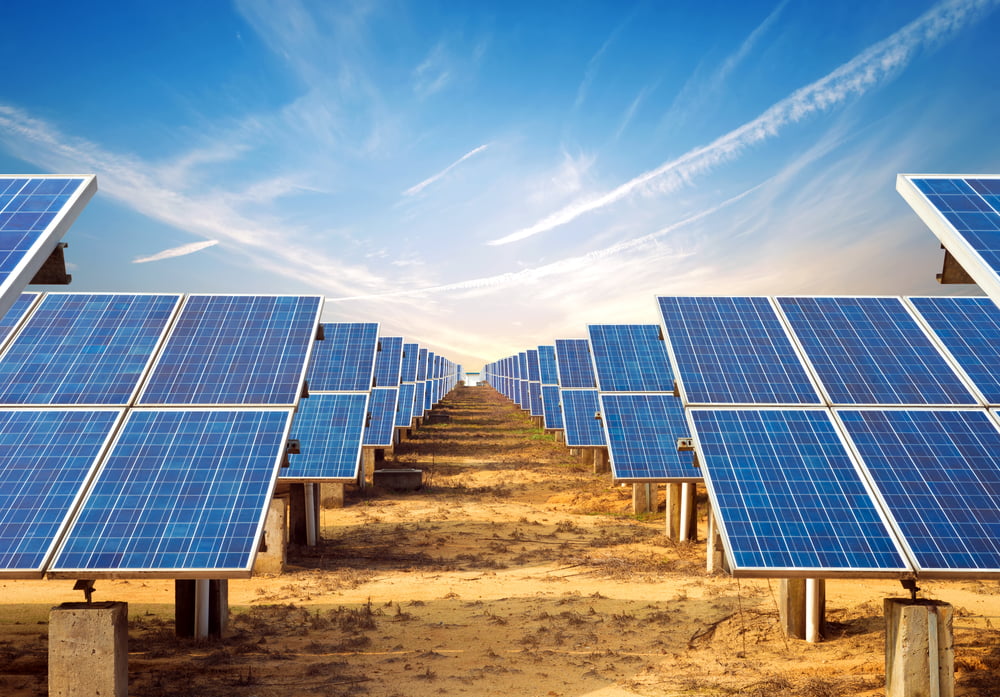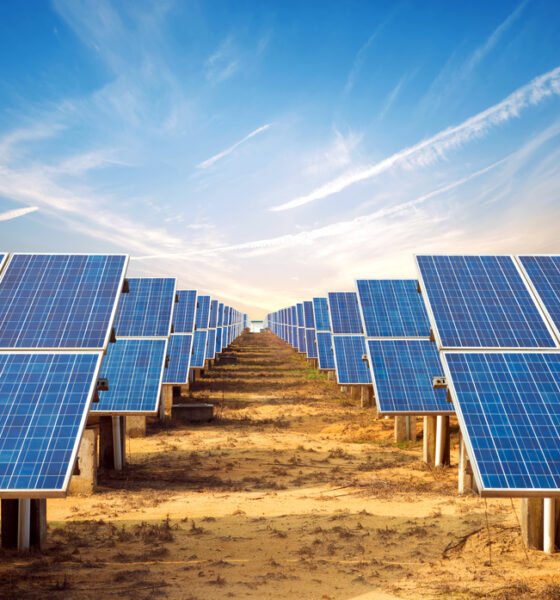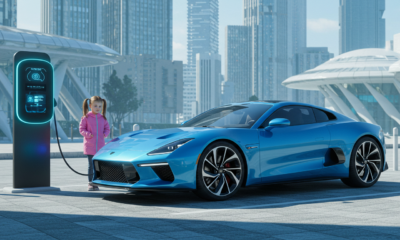

Energy
The Pros and Cons of Solar Panels for Home Use
Solar panels have surged in popularity for home installation in recent years. So far, around 8% of Americans have installed solar panels, but this figure is going to grow sharply in the next few years.
As solar technology improves and costs decline, many homeowners are attracted to the benefits of solar power production. By installing photovoltaic solar panel systems on rooftops or in yards, homeowners can generate clean electricity and reduce their dependence on the grid. With enticing tax incentives and a favorable return on investment timelines, it’s no wonder residential solar adoption is growing rapidly as more people start to see the benefits of clean energy.
However, solar panels aren’t a miracle solution. While they provide many advantages, there are also some potential drawbacks to examine before deciding if solar is right for your home. This includes upfront costs, system efficiency, maintenance needs, and aesthetic considerations. Carefully weighing the pros and cons will provide the full picture to determine if solar panels in NJ are a wise long-term investment that can lower electric bills while minimizing your carbon footprint.
Pros of Solar Panels
We previously talked about some of the benefits of solar panels. You can find more details below.
Reduce or eliminate electric bills
Installing solar panels allows homeowners to reduce or even eliminate their monthly electric bills, providing significant cost savings over time. On average, residential solar panel systems in the U.S. produce annual savings of $1,500 on grid-tied utility bills. For a typical 5-kilowatt system size, monthly savings can offset 30-60% or more of previous utility costs. These monthly savings quickly add up, shortening the solar panel system’s return on investment timeline down to 5-7 years on average. After this break-even point, solar provides free renewable energy and protection against rising utility rates for another 15-25 years.
Increase home value
Multiple studies have shown that installing solar panels can increase a home’s resale value. Homes with solar PV systems have been able to sell for $15,000 more on average compared to similar non-solar homes. This value increase is due to solar energy’s appeal to environmentally-conscious home buyers as well as the reduced electric costs conveyed with solar. Properties with solar panels are becoming increasingly desirable.
Reduce carbon footprint
One of the main motivators for going solar is its ability to reduce a household’s carbon footprint. The average residential solar panel system can prevent over 30 tons of carbon emissions over its total lifetime. This has a measurable positive environmental impact by replacing fossil fuel-based grid power with clean, renewable energy. Going solar for 25 years eliminates the same amount of carbon as not driving an average car for 8 years.
Low maintenance costs
Part of solar energy’s appeal is its minimal maintenance needs. Other than occasionally cleaning off dust and dirt buildup, solar panels are self-sustaining devices with no moving parts or fluids. Modern solar panels are durable enough to withstand extreme weather conditions like hail or high winds. Reputable solar manufacturers provide 20-25 year warranties and guarantees on solar panel productivity and performance. After the system is installed, very little homeowner maintenance is required.
Government/state tax credits and incentives
To encourage solar adoption, federal, state, and local governments offer generous tax credits, rebates, and incentives to go solar. The federal solar tax credit refunds 26% of the cost of installing a solar system. Many states have additional credits that can cover up to 50-75% of solar panel system costs after combining federal and state benefits. Utility companies also provide solar rebates to offset the purchase price. These financial incentives lower the net cost of going solar significantly.
Energy independence/grid security
Solar panel systems provide energy independence and security separate from the traditional electrical grid. A whole house battery backup protects homeowners from grid blackouts, power shortages, and natural disasters. For rural residents beyond the grid, solar panels offer clean reliable power. Solar also provides a choice for homeowners who prioritize energy freedom, self-sufficiency, and disaster preparedness.
Cons of Solar Panels
High upfront costs
The most prohibitive downside of installing solar panels is the high upfront cost. Complete solar panel systems for a typical home average $15,000-$25,000 in upfront costs before incentives. Although incentives and tax credits can offset 30-60% of this amount, it is still a major investment for any homeowner. For those unable to make a large lump-sum payment, solar loans or leasing options are available. But these financing routes can increase costs over time through interest charges. Weighing whether it fits within your budget is an important first consideration.
Long ROI timeline
Due to the steep initial investment, recouping your costs for a solar installation can take time. The return on investment period is typically 5-7 years for residential solar but varies based on system size, electricity costs, and available solar incentives. Some analyses calculate ROI timelines as long as 15-20 years in less favorable scenarios. Homeowners need to plan for the long haul to realize solar’s full lifetime savings. Those uncertain about staying in their home for 10+ years may want to wait until they have more housing stability.
Panel efficiency reduced by weather/climate
A solar panel system’s energy production capabilities depend heavily on the amount of direct sunlight exposure. Cloudy days, storms, and seasonal changes in daylight hours can limit solar output. In northern regions, winter snow covering panels affects efficiency. In hot climates, solar panels become slightly less efficient at high temperatures. No location will achieve maximum-rated production year-round. Homeowners should account for solar production fluctuations of 30-50% between peak summer and winter.
Physical space and roof requirements
To effectively capture the sun’s energy, solar panels need adequate unshaded roof space facing a southerly direction. The roof must have structural integrity to support the panel system’s weight. Trees or buildings that could cast shadows on the panels need to be accounted for. If your property lacks usable roof space, ground-mounted or carport solar installations are options but at an increased cost. Limited roof space may restrict how large of a solar system can be accommodated.
Long replacement timeline
While solar panels are built to last 25-30 years, their productivity slowly declines over time resulting in lower energy output. Eventually, the panels must be replaced to maintain optimal production. When this replacement occurs, homeowners will have to buy an entirely new system if they wish to continue having solar power. This can add up to thousands in replacement costs down the road.
Aesthetic visual impact
Some homeowners choose not to install solar panels because they dislike how the panels look on the home’s roof and neighborhood aesthetics. Solar arrays can appear industrial and out of place architecturally, especially on visible street-facing sections of the roof. Homeowners associations in certain neighborhoods prohibit or restrict solar installations due to appearance reasons. While solar panels have become more streamlined and less obtrusive over time, aesthetic concerns remain a barrier to widespread adoption.
Conclusion
Though solar panels come with high upfront costs and other limitations, their lifetime environmental and financial benefits often outweigh these drawbacks for homeowners with adequate sunlight and roof space. Carefully weighing the pros and cons based on your specific home situation and budget is key when deciding if solar is right for you.


 Environment10 months ago
Environment10 months agoAre Polymer Banknotes: an Eco-Friendly Trend or a Groundswell?

 Environment12 months ago
Environment12 months agoEco-Friendly Home Improvements: Top 7 Upgrades for 2025

 Features9 months ago
Features9 months agoEco-Friendly Cryptocurrencies: Sustainable Investment Choices

 Features10 months ago
Features10 months agoEco-Friendly Crypto Traders Must Find the Right Exchange





























